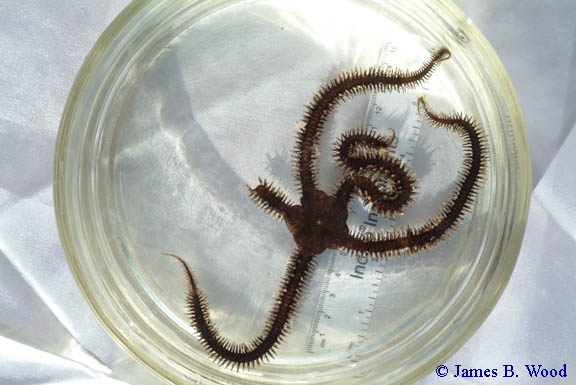Blunt-Spined
Brittle Star
Ophiocoma echinata
Ophiocoma echinata
By Katherine
Degnan
Dr. James B. Wood and Kim Zeeh - Editors
Dr. James B. Wood and Kim Zeeh - Editors
|
Blunt-Spined
Brittle Star
Ophiocoma echinata By Katherine
Degnan
Dr. James B. Wood and Kim Zeeh - Editors |
